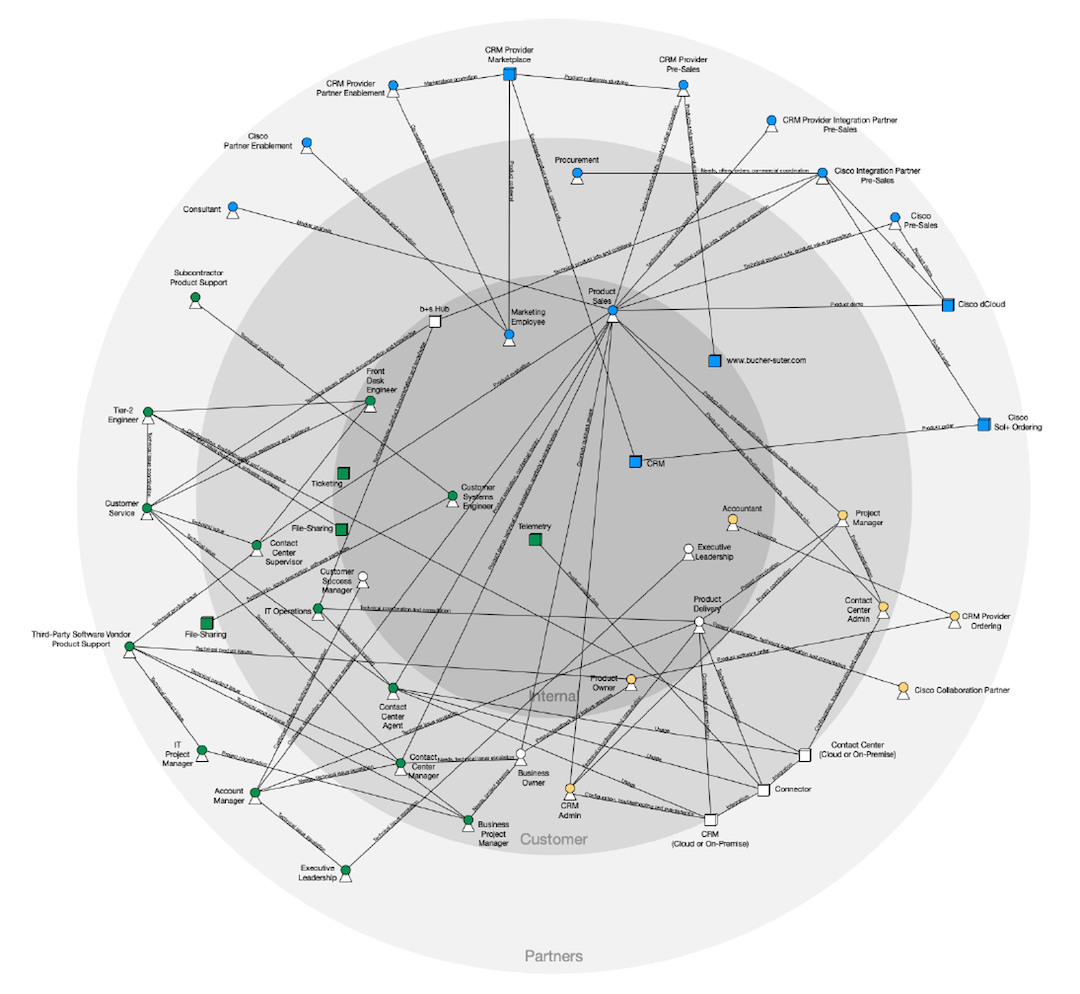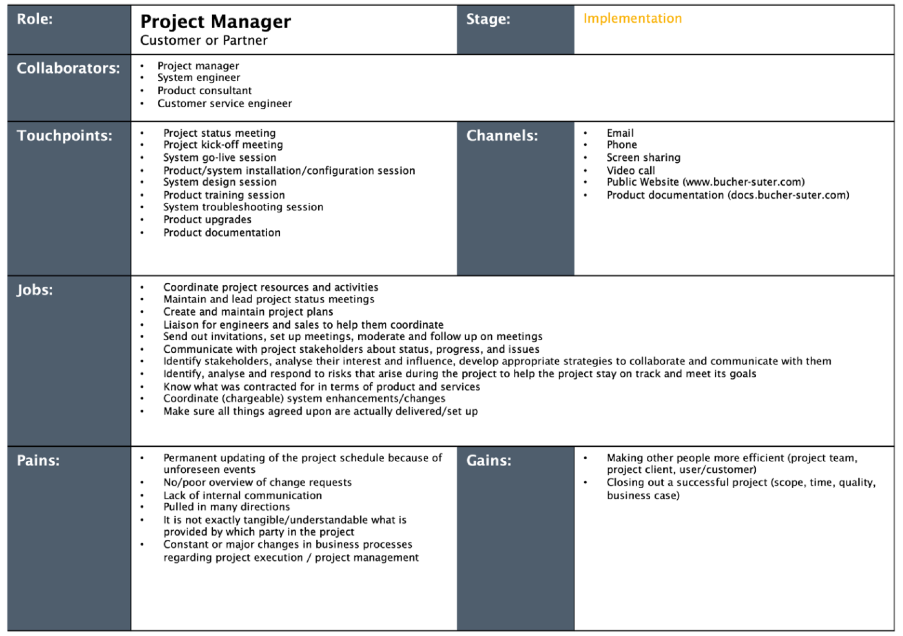The b+s Hub and its future – interactions in B2B take place between people, not between companies
At Bucher + Suter, we develop and sell solutions for Cisco Contact Center and the Webex platform that help our customers efficiently maintain better relationships with their own customers. The technological innovation that we sell, as value-added resellers of Cisco’s solutions and create for Cisco ecosystems, has been the foundation on which we’ve helped hundreds of companies build better contact centers and customer service. Understanding the relationships our customers have with theirs and the challenges they face in those relationships has been a massive part of how we’ve created mutual value and success. Back in early 2019, we sought to better understand our connections with our customers and partners and build a solution that would add value to our business relationships.
The b+s Hub is a relatively young platform, and Bucher + Suter has many ideas for its future. The customer and partner interactions that the b+s Hub could usefully support in the future were investigated as part of a master’s thesis conducted at the Bern University of Applied Sciences. The piece describes, naturally in somewhat academic terms, how some of the early days of the Hub project unfolded and how the analysis of our relationships continues to help us foster its future.
Although the B2B world in which Bucher + Suter operates is fundamentally about interactions between companies, most of these interactions are carried out by people or at least influenced by them.
Modern technologies have made it possible for such interactions to occur not only through face-to-face encounters but also through digital channels. However, with the very particular web of relationships between supplier and customer, it is often a challenge to use digital technologies in B2B to positively influence the Digital Customer Experience appropriately and in a fashion that suits both sides of the relationship.
The b+s Hub was launched in late 2019 as a way for Bucher + Suter to offer always-on, self-service options to our customers and partners. Initially, the Hub served its audience mainly as a file repository for our product documentation. However, we’ve always had bigger plans for the platform. In 2020, we migrated the platform to Salesforce Experience Cloud. At Bucher + Suter, we’re heavily invested in the Salesforce ecosystem. Both from our own internal point of view, as well as our outward-facing development. We are both a partner and a customer of Salesforce. As our CRM, the technological foundations of our customer service, the maturity, and integration of Salesforce’s Experience Cloud, reached a level where we recognized significant opportunities for the Hub’s expansion and adding highly personalized experiences.
As a corporate portal, the b+s Hub promises to support digital interactions with our customers and partners in a meaningful way by enabling them to obtain information, exchange information with us, or carry out transactions via a central access point. Personalization mechanisms, empowered by integration with our Salesforce org, are intended to provide our customers and partners with more relevant information in the b+s Hub rather than simply more information.
Joining the dots in the network to create value
Because of the complexity of digital products and services, such as those offered by Bucher + Suter, it is no longer possible for a single company to create value and then serve it to a customer alone; instead, there is a need to maintain alliances and create a value network with the right partners. However, this web of relationships between suppliers, contributors, and buyers makes it challenging for B2B vendors to support interactions through digital technologies in a meaningful way. In particular, the trick is to find the right balance between digital and human interaction in the value network. In order to make the Bucher + Suter value network more tangible, it was visually modeled with the help of an ecosystem map. In several internal workshops, maps of Bucher + Suter’s value network were developed, and its actors (stakeholders and systems), their methods, and their interactions with one another were modeled. The following figure shows an example of a view of our value creation network in the product business.

Figure 1: Ecosystem map of the Bucher + Suter product business
Due to the strong influence exerted by a respective role of an individual in their business life, heterogeneous groups of business customers are divided into smaller, homogeneous subgroups with similar characteristics to understand better their needs, attitudes, and preferences toward digital interactions [3]. That is to say, prospective Hub users were grouped, similar to the UX technique of persona creation, to help us better ascertain the portal requirements from the most rather than the all. Using the developed ecosystem maps, our customers’ and partners’ different groups of prospective users were characterized and documented in further workshops.

Figure 2: The “Project Manager” user persona
Based on the developed personas, the possible user types of the b+s Hub and how a benefit could be created for them through new digital capabilities in the b+s Hub were ascertained.
New capabilities for the our customer and partner platform
Online learning, knowledge articles, or functions to work together on projects were identified as new capabilities with a high-value proposition for many user types. In addition, 21 other new potential capabilities were identified for the b+s Hub. However, we can’t do everything, and we certainly can’t do it all at once; and due to the lack of relevance assessment by actual users, statements about the potential value of an existing or new capability are limited. It is conceivable, for example, that even though relatively few suitable capabilities were identified for a user profile, one of them could provide an enormous benefit and make the working lives of many people less complicated. Consequently, the fundamental question arises as to whether the b+s Hub should aim to digitally support as many different interactions as possible between the various groups of people at our customers and partners and us, or whether it is not more valuable if the b+s Hub specifically satisfies particular needs of specific groups of people, because this would benefit our collaboration with them the most.
The crux of personalization
Identifying the many different user profiles suggests that implementing usable personalization in the b+s Hub will be challenging. What could already be used for explicit personalization is to consider which products and services we provide, that a customer uses. However, it still seems worthwhile to consider using implicit personalization (based on information we have learned about the users’ behavior) instead of explicit personalization (information actively given up by the user) techniques or even to offer customization. Using the former, content and functionalities in the b+s Hub could be personalized based on collected usage data, but this would require both the technical means and the corresponding data. Self-personalization would mean that users could compile content and functionalities in the b+s Hub according to their interests.
Develop ideas, try them out, and implement or discard them.
Our in-house b+s Hub team uses the results from our research activities to implement new capabilities on a test basis in the b+s Hub, have them tested by our customers and partners, and get feedback on the new capabilities’ actual benefits and then implement or discard them. In doing so, each potential power of the b+s Hub can be evaluated for its self-service suitability to understand whether its implementation will meaningfully digitally support the relationship with our customers and partners or detract from it through reduced personal interaction.
The b+s Hub has become a core component of our relationship with our customers and partners. Through a deeper understanding of the needs and wants of its users, we endeavor to grow its functionality and provide even more value within the confines of the portal. The roadmap of the b+s Hub and the opportunity to comment on its usefulness and provide feedback for ongoing requirements is available to Bucher + Suter customers and partners, here: https://hub.bucher-suter.com/s/article/bshub-roadmap.
This is an excerpt from the master thesis “B2B Digital Customer Experience – Investigation of the value proposition of the Bucher + Suter company portal,” written by the author as part of his MAS studies at the Berner University of Applied Sciences (BFH).
Sources
- [1] Pagani, M., & Pardo, C. (2017). The impact of digital technology on relationships in a business network. Industrial Marketing Management, 67, 185–192.
- [2] Maechler, N., Poenaru, A., Rüdt von Collenberg, T., & Schulze, P. (2017). Finding the right digital balance in B2B customer experience. McKinsey & Company.
- [3] Hallikainen, H., Hirvonen, S., & Laukkanen, T. (2019). Perceived trustworthiness in using B2B digital services. Industrial Management & Data Systems, 120(3), 587–607.





